 |
The main Chuvashian God - Turӑ (chuv. Турӑ) - Touro, Thuro or Torah. He is the same as Christ, Allah, Yahweh and the like World gods by other peoples and religions. Chuvashes do not know what Turӑ looks like, he has no appearance, he is a Great spirit, the soul of the Universe.
Some apart stand Chuvash gods the Ases (chuv. Ас-турри, As-turry - As-gods). They are gods a heroes, the heroes of Chuvash legends. They names: Asladi (chuv. Аслати), Asamat (Azamat), Ulp (chuv. Улăп), and many others a bators - heroes.
Thunderer Asladi (Aslati) from Chuvash - the Great Father (Аslӑ Atte). Asladi is the chief of the Chuvash gods house (kil) of the Ases - Askil. The eldest son of the Universal God - Turӑ (Torah). Asladi is the lord of the all nature and the sky. With a huge fiery whip (a thunderbolt), Asladi punishes the sinful Earth and unrighteous people. The sound of this whip cutting through the clouds is like thunder. Chuvash god Asladi - ancient Aspandiar, Tengri (Turkic) or Zeus and Jupiter. 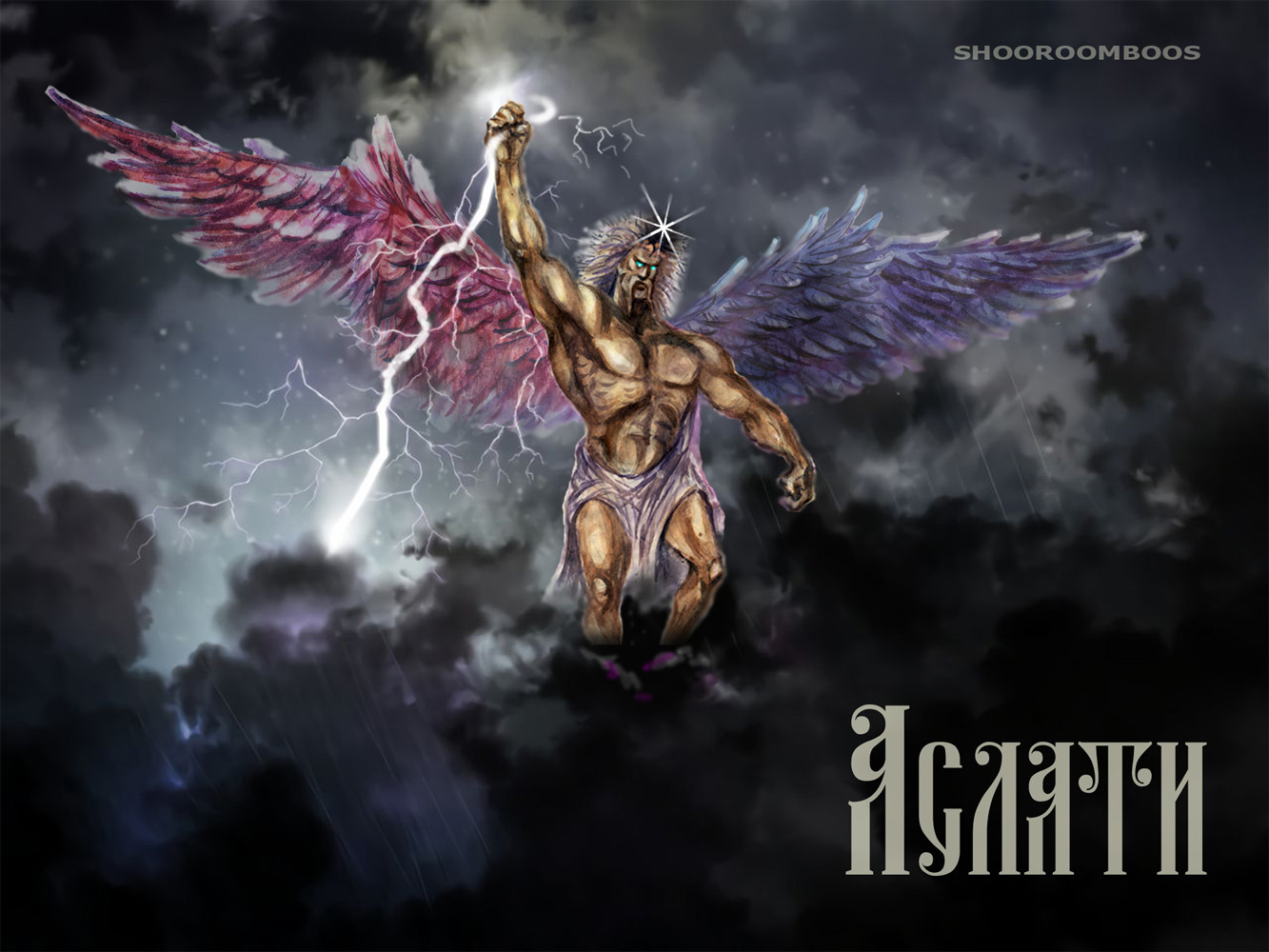
Thunderer Asladi (painting by Shooroomboos) 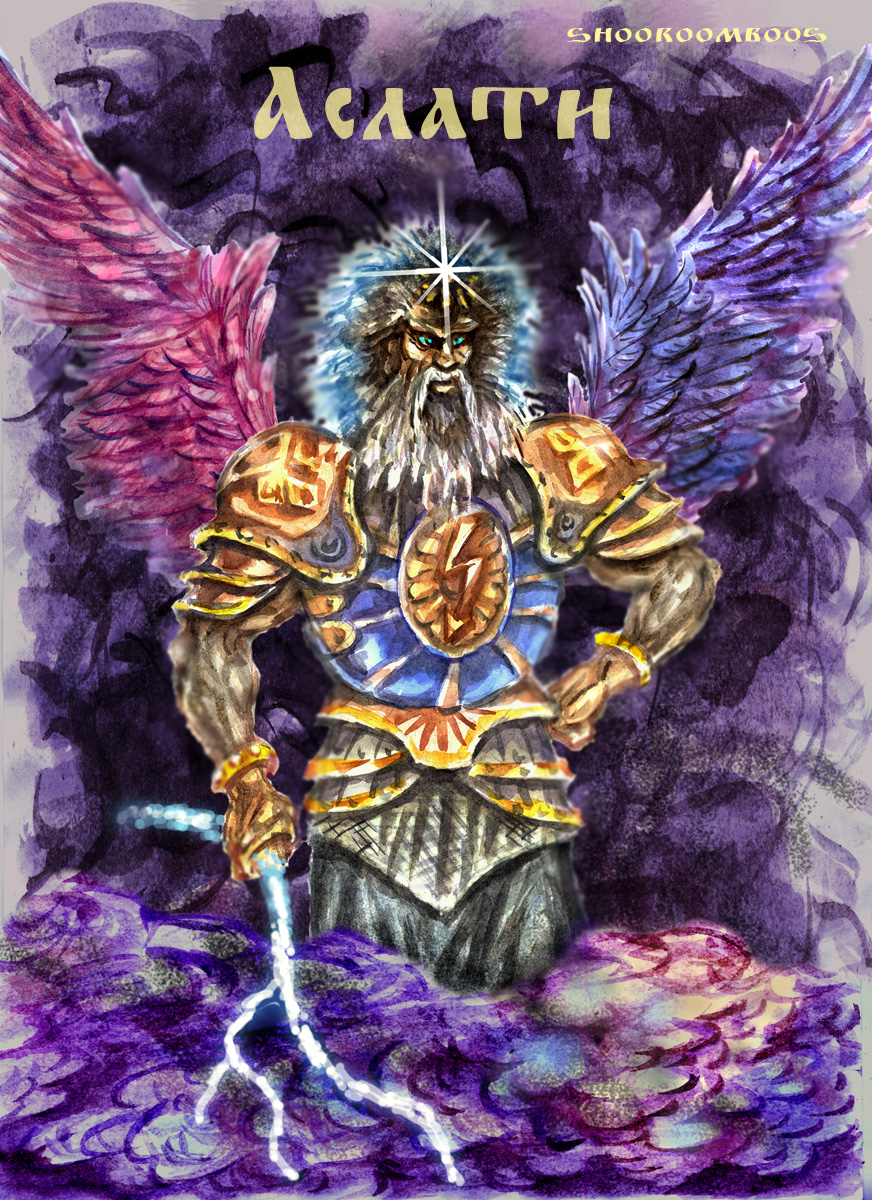
Asladi - Chuvash God (painting by Shooroomboos)
Asamat (Azamat) - Chuvash god (middle level) is the son of the thunder god Asladi (Uslati); "asladi" (аслати) in Chuvash - a thunder. Asamat is a craftsman and miracle worker, he is a smith. In the legends, Asamat creates many tools of labor and household for the Chuvashs as: a hammer, an anvil, a plow, a sickle, and so on. An important creation of Asamat is a rainbow. The blessing that comes after the work of his father - Asladi (thunder). In Chuvash, rainbow is - асамат кĕперĕ (asamat kebery), which literally means - Asamat Bridge. There is no other name for a rainbow in the Chuvash language. Rainbow is a Asamat (Azamat). 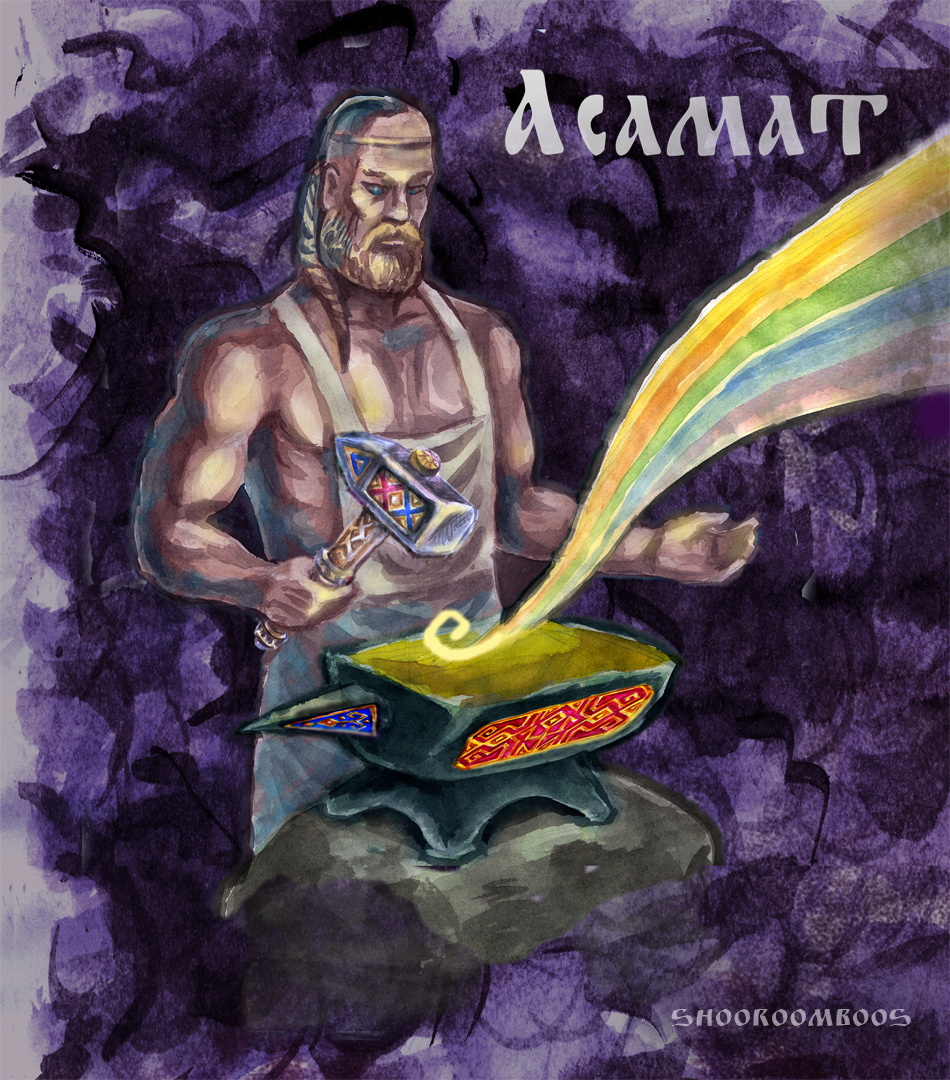
Asamat the smith forges a rainbow (painting by Shooroomboos) The name Asamat comes from the Chuvash dictionary root "asam" (azam). This word "asam" in Chuvash means: miracle, magic. Words are formed from this:"asamlă" - magical, wonderful; "asamçă" - wizard, magician; "asamat" - wizard, miracle master and the rainbow. Azamat is a brother of the main hero of Chuvash legends - a bator (hero) by name Ulp (or Oulp, chuv. Улăп). Format of writing the "Ulyp" is not correct. Bator-hero Ulp - the hero-giant of Chuvash legends, he also son of the thunderer Asladi. In Chuvash myths, Ulp is the defender of the Chuvash people and one of their progenitors. In tales, Asamat often comes to the hero Ulp by help. Asamat for Ulp forged a fiery sword - Vutkhez (chuv. Вутхĕç), presented the winged steed (argamak) - Silzyunat (chuv. Çилçунат), and many other deal. 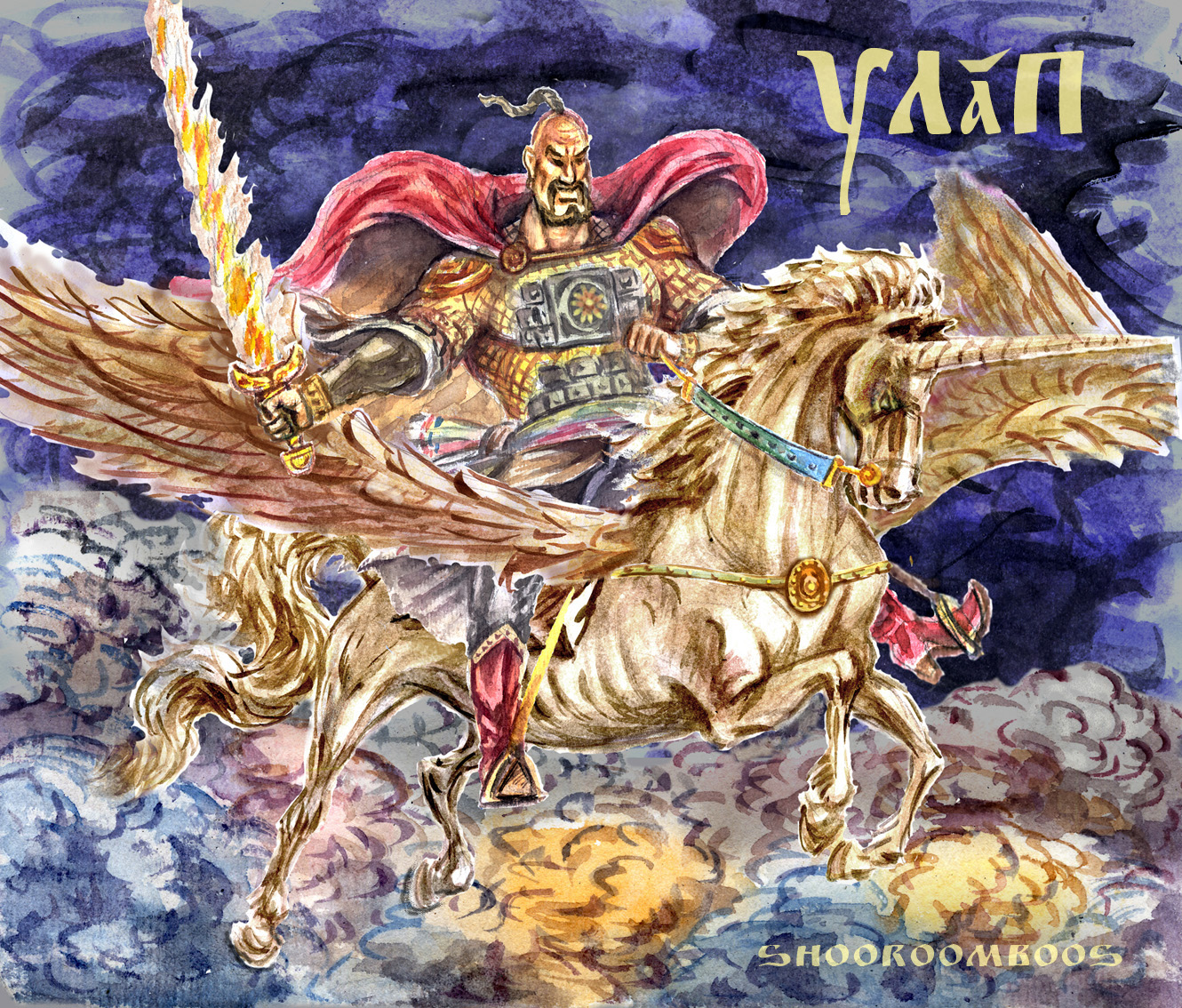
Bator Ulp - Chuvash God Hero (painting by Shooroomboos)
The Chuvashian hero Ulp has a historical prototype described by the Armenian (Caucasian Albania, Aluank) ancient chronicler - Moses Kalankatuaci (Movses Kagankatvatsi).
Moreover, it is quite likely that Alp himself could have been the creator of the Second Turkic Khaganate (Empire) known as: The Khaganate of the Gok-Turks - the Blue Turks.
The Alp brought to the Turks a Chuvash runes, similar to Scandinavian and Middle Eastern, and fund basis for the ancient Turkic runic script.
Perhaps the name of the king Alp originates in honor of the high western mountains - the Alps.
The modern Chuvash language differs in many ways from all Turkic languages. These are the consequences of the separation of the Western Huns (Xiongnu) - the ancestors of the Chuvash, from those who remained in the east in Central Asia.
God Asamat - is a master god, a smith god, a miracle worker god - the patron saint of creativity and craftsmanship.
The Chuvash are one of the few peoples who have preserved their traditional mythology.
The Chuvash language is the oldest, from central and northern Asia, a direct descendant of the dialects of the ancient Hunnu (Xiongnu) and Scythians of Altai and Sayan.
Giant Ulp (Oulp) - the main hero of Chuvash legends and fairy tales. Asamat often accompanies him.
In another legend, Ulp grazes its flocks by the Volga River. Volga - Atl (Атăл), in Chuvash.
The cattle have eaten all the grass on one bank of the Atl River (Volga) and require more food. The grass grew thickly on the other side. However, the Atl is so large that it does not allow the giant Ulp to move his animals. 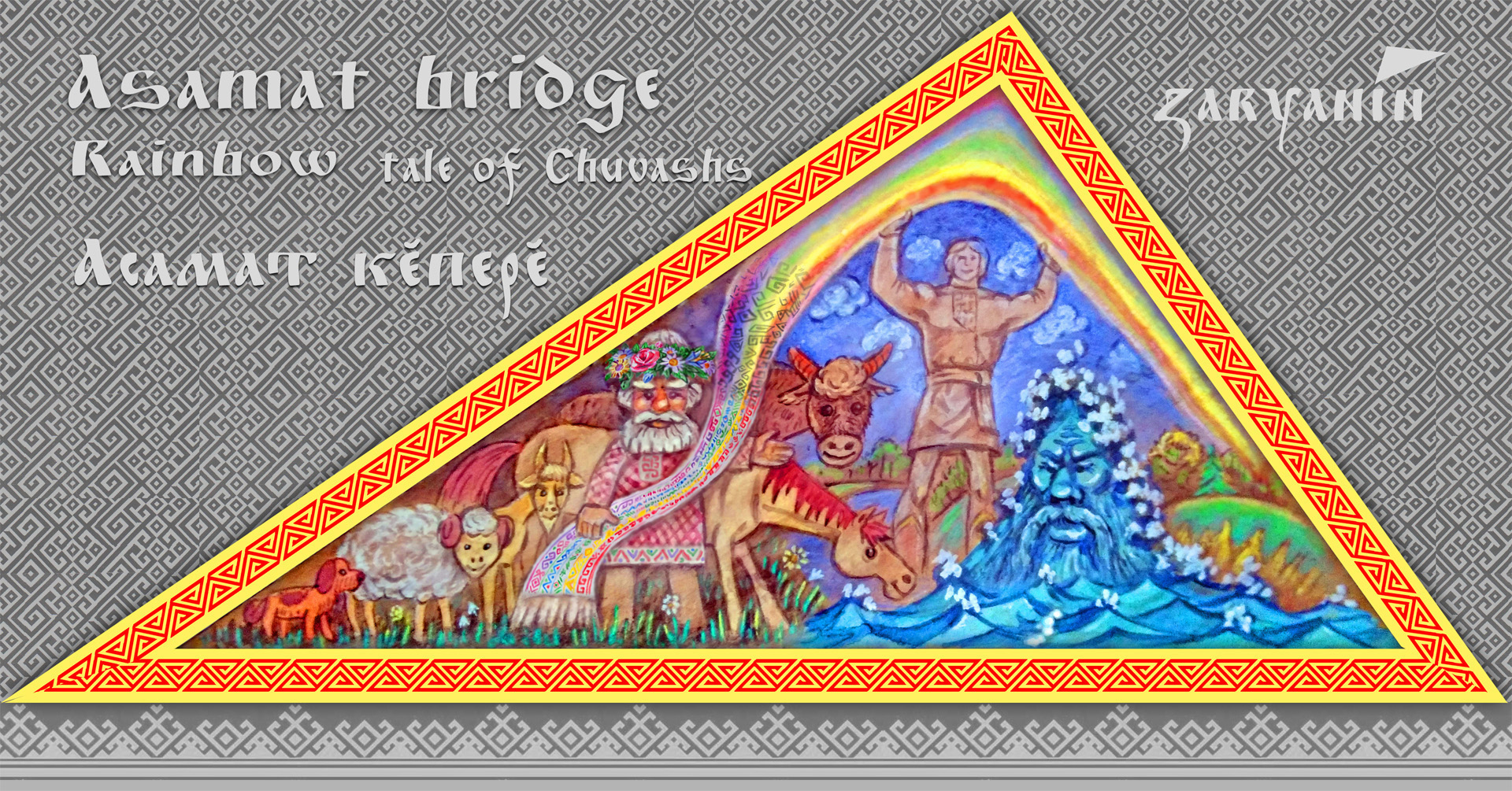
Azamat Bridge (rainbow) - triangular painting by the artist Zaryanin The relationship between the giant Ulp and the powerful Atl (Volga River) in Chuvash legends isn't easy, but although not always. In the legend of the Shyvguli mountains (shyw-kuli) is told about the appearance of the Zhiguli mountains in the Samara bend (river bowing) of the Volga River, near the city of Samara.
Atl again didn't let Ulp with herds on the other shore. This time, the angry giant Alp tore off the mountain from the Urals, making the Ural Mountains lower. Ulp threw this mountain onto the Atl riverbed. This mountain collapsed into smaller mountains, thereby blocking of Atl River path. The mighty and huge Atl wanted to pour over these mountains. And large lake was formed, this water threatened to flood the whole world. But first the all Chuvashs living nearby would have to drown under a layer of deep water. Chuvashs begged for mercy. For this times, the small Samara river came to the aid of the Chuvashs. Samar river suggested to big Atl don't to drown the Chuvash people but to bypass this new mountains. The great Atl agreed with words of the wise river and did not flood the Chuvash villages. He walked around the mountains that stood in his way. The Chuvash nation >> The Chuvash history by Shooroomboos >> 
SHOOROOMBOOS THE SUNRISE copyright © SHooRooMBooS, 2020 |
 |